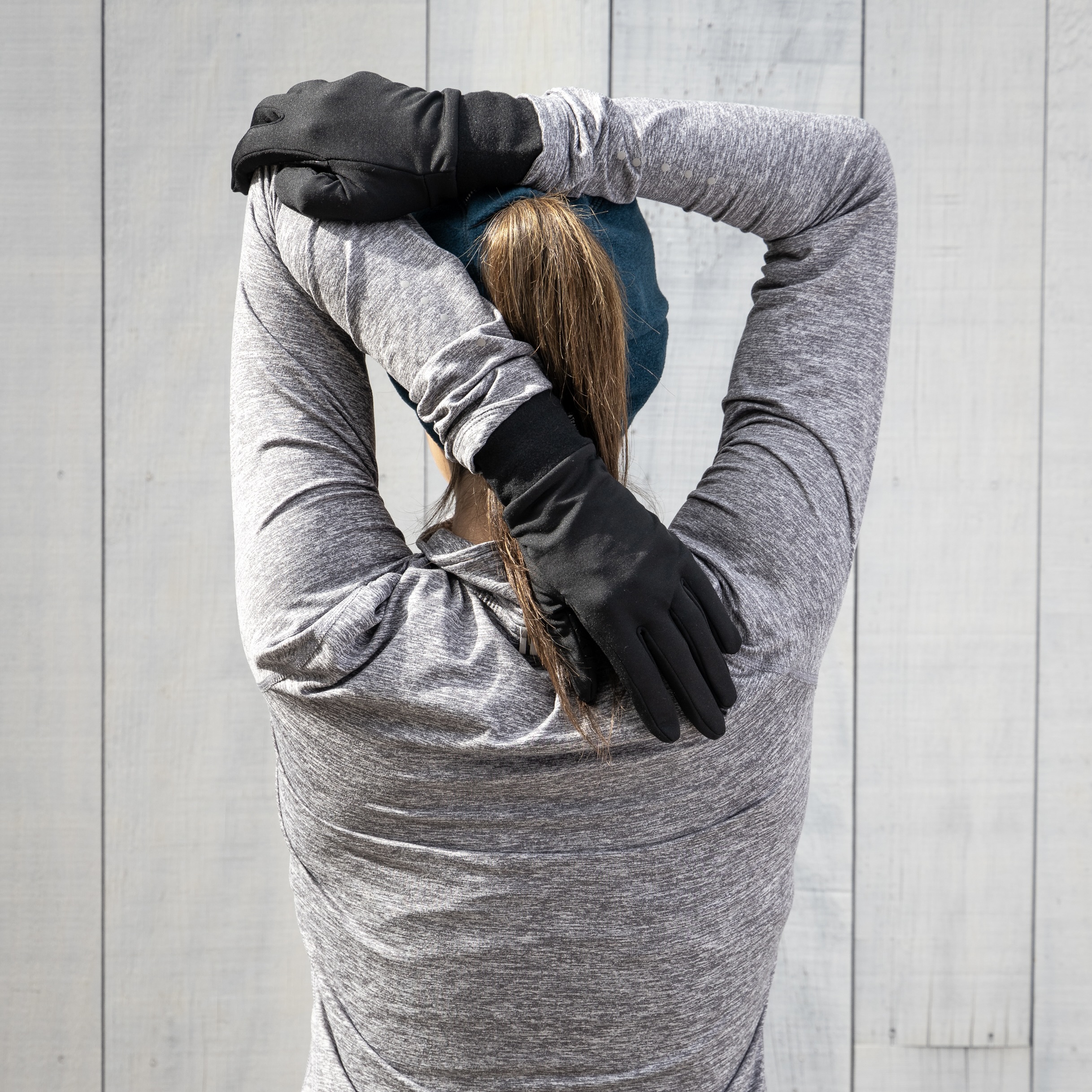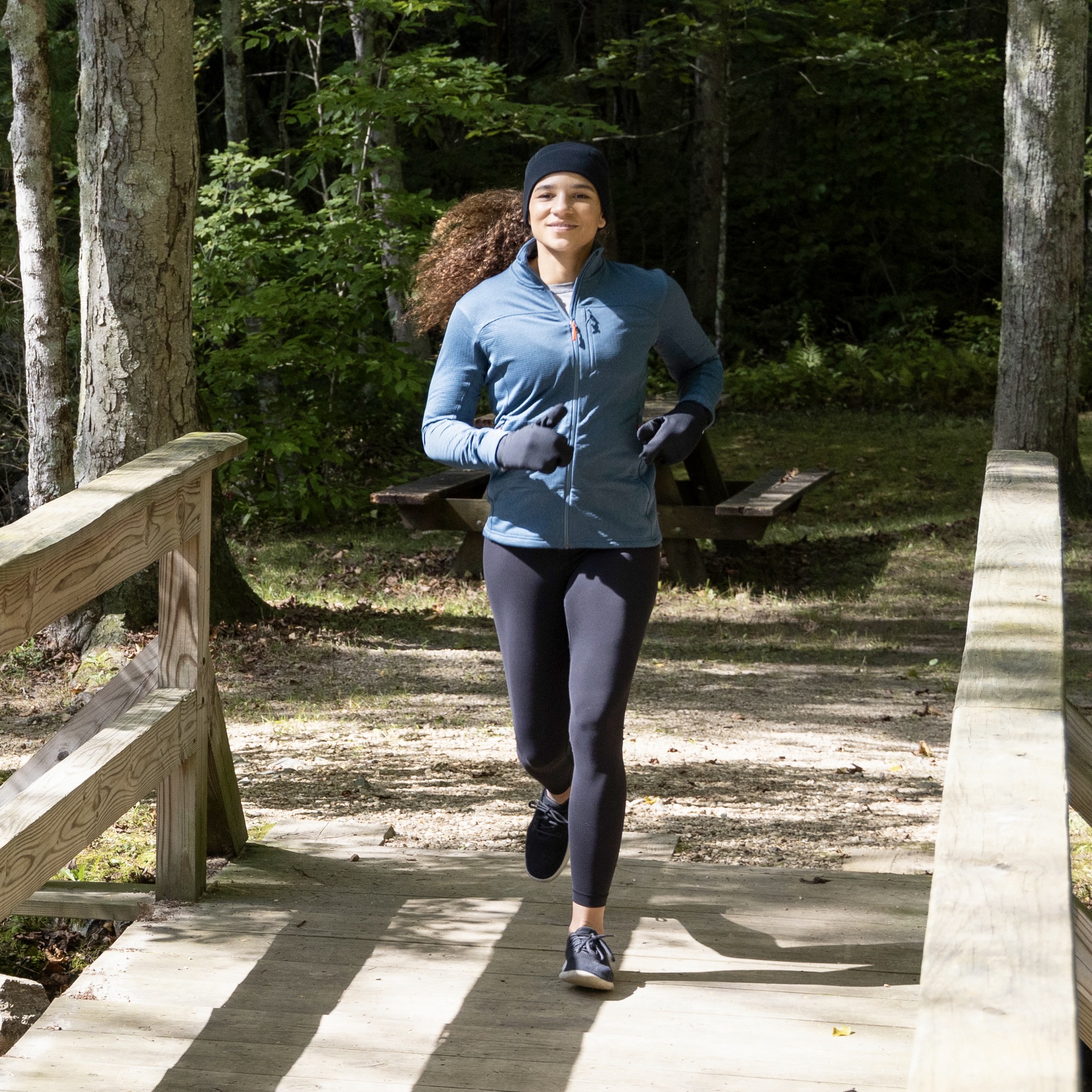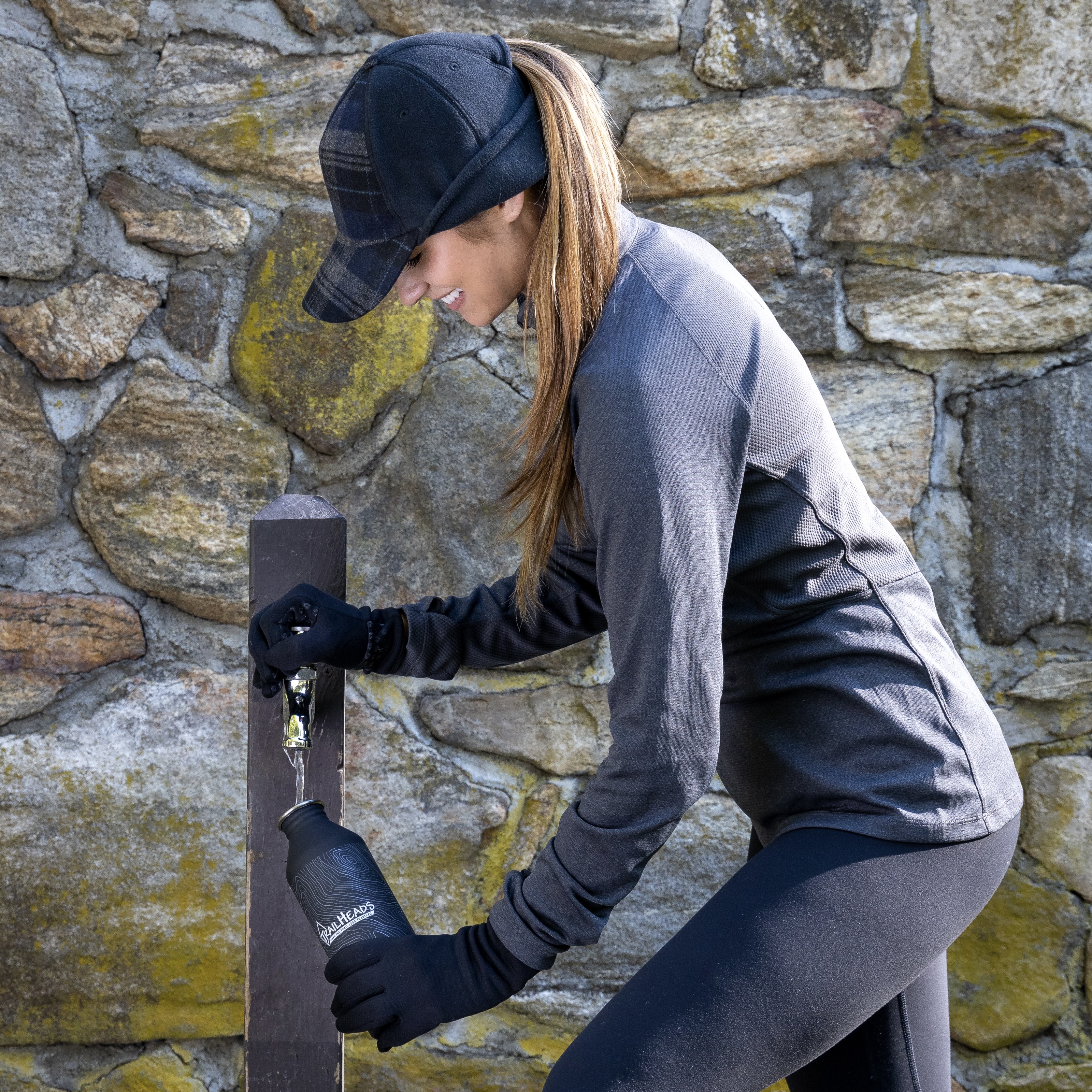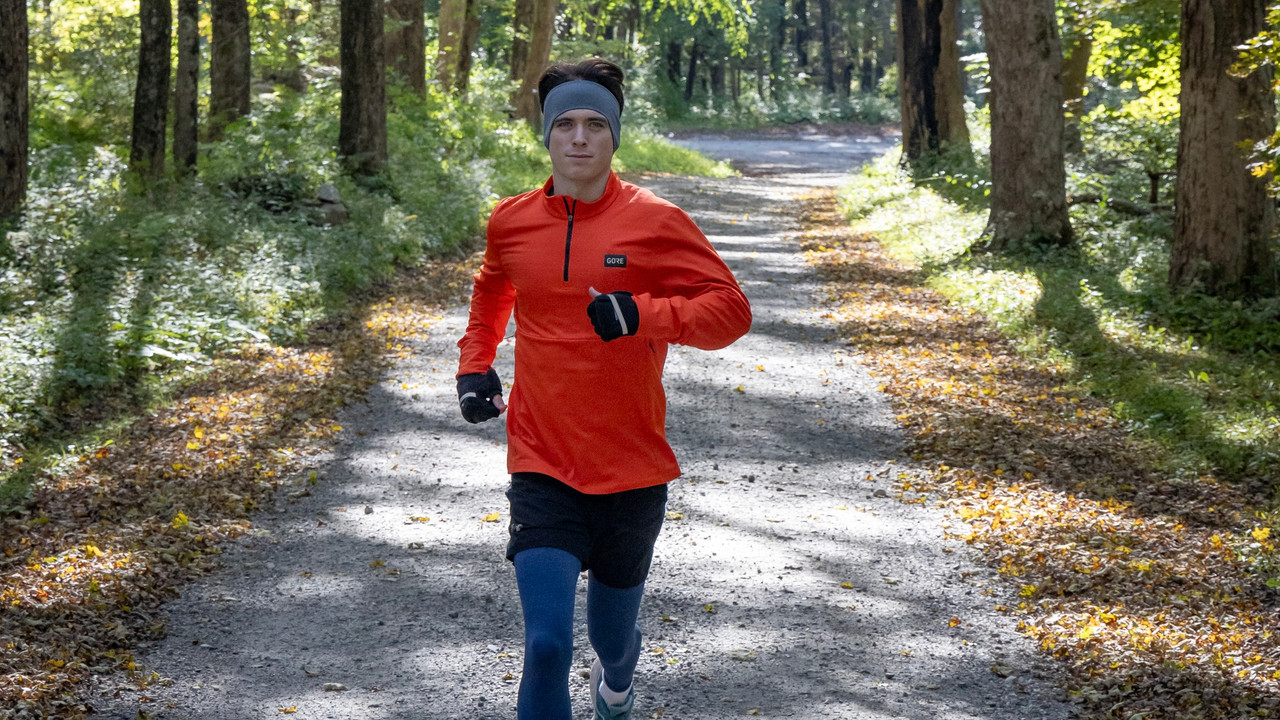Stay light on your feet and be ready for anything on long trail runs with these packing tips.
So you’ve been working on increasing your distance trail running and have discovered that you’re needing to carry more stuff with you to feel prepared. This guide will help you figure out what to carry on your long trail runs and suggests some of our favorite products to make sure you’re comfortable, well-fueled and ready for anything.
What to carry for a long trail run
Start with the basics: your foundation should include comfortable, high-performance base layers, good socks, a pair of trail running shoes and a running backpack with plenty of capacity in the main compartment, easy-access pockets on your chest and wide shoulder straps for comfort. Then start thinking about all the extras you could carry with you, including layers, hydration and nutrition, navigation and contact technology and other handy tools.
Layers
Being comfortable on a long trail run relies on knowing the forecast and having layers to be ready for anything, especially in mountainous areas where severe weather can roll in quickly. You could start a run in 70-degree weather and experience a big temperature drop, wind and rain all during a single outing.
Because space is at a premium out on the trails, we recommend focusing on lightweight layers that work together to offer the protection you need. We also recommend having a hat to keep sun and precipitation out of your eyes, plus an ear band and a light pair of gloves for a little extra coverage when needed. These lightweight items could be worn around your waist, tucked into bungees on the outside of your running pack or take up minimal space inside your pack.
All-season must-haves:
- Long sleeve shirt (bonus points if it has UPF for sun protection!)
- Windproof and/or water-resistant jacket
- Race Day Running Hat (men’s | women’s)
- Sunglass Slots Running Headband
- Touchscreen Running Gloves (men’s | women’s)

If you’re heading out in winter months, preparing for freezing temps and snow is essential. We recommend fleece or insulated mid layers because they’re light but do a great job of trapping heat while still moving sweat away from your skin to the surface where it can evaporate.
Cold-weather must-haves:
- Fleece pullover or jacket
- Merino Wool Beanie (men’s | women’s)
- Insulated Convertible Mittens (men’s | women’s)

Hydration and nutrition
Maintaining your energy levels is so important for your efforts on the trail, and while that starts with fueling before your trail run, keeping that energy up while you’re running is just as essential.
Trail runners have nutrition locked down–if you participate in a big trail race, the aid stations might include snacks like chips, candy, salted potatoes, oranges and bacon. Some of these are a little harder to carry when you’re running trails without support, so we prefer products that are easy to carry.
Hydration and nutrition must-haves:
- Water
- Electrolytes
- Fuel - we like Endurance Tap and 2Betties

Just because your trail-running buddy does well with energy gels and chews doesn’t mean it will work for you. It might take some trial and error to figure out what works for your stomach. We recommend practicing your fueling and electrolytes on shorter runs so you’re not struggling with digestion issues out on the trails.
You have many options for how to carry water and electrolytes, including hydration packs, hand-held bottles with pockets and fuel belts. We love a vest because it has more space for gear and it’s easier to strap it down to prevent bouncing.
For long trail runs, we recommend using a 2-3-liter bladder for water and soft flasks or bottles for electrolytes. It’s easier to mix the right amount of electrolytes in smaller bottles and better to stick with plain water in the bladder to keep it clean.
Navigation and contact
Familiarizing yourself with your route and zoning out can be easier to achieve on shorter trails, but as you start adding miles, you might find yourself having to pay attention and do some route-finding. As you head deeper into the wilderness on remote trails, it’s essential to know where you are, how to get out and how to get help if you need it. Your cell phone might not work in the boonies, so you might consider adding a satellite device to your kit.
Navigation and contact must-haves:
- Map and compass
- GPS map that works offline - we like AllTrails and Gaia GPS
- Fully charged cell phone with waterproof case (or doubled-up sandwich bags)
- Garmin InReach Mini satellite communication device
- Portable charger
Other tools
There are a few extras that run the gamut from essential to handy to have in your pack for your long trail run.
- Emergency first-aid kit
- Sunglasses
- Sunscreen
- Gaiter/multiband
- Anti-chafe balm
- Folding trekking poles
Tips for packing
When loading up your pack, we recommend putting the items you’ll need most frequently in the easy-access pockets in the front, extras in the top of your pack and less-needed items on the bottom. This way you’re not digging around looking for the backup fuel or extra pair of gloves you brought. Be sure to leave room for a water bladder.
Tip: When you’ve filled a water bladder, turn it upside down and use the straw to suck the extra air out. This eliminates any sloshing noises while you’re running.
Packing for adventure races and ultras
What you bring for a long-distance run on a familiar route might be different than what you’d carry for an adventure race or ultra on an unfamiliar trail or in remote areas. You’ll want to pack for all contingencies, and the race might even provide a list of suggested (or required) gear to have on hand.
Check out our blog for more tips to help you take the trail less traveled.

